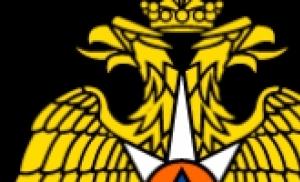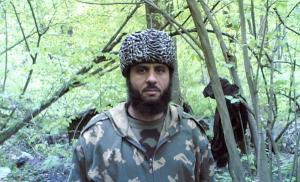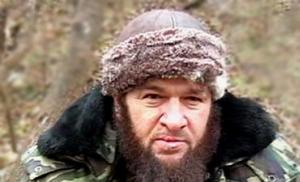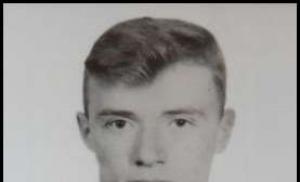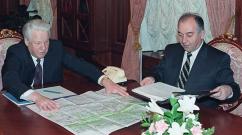The most famous princes of Vladimir of the Suzdal principality. Vladimir - Suzdal princes
Vladimir-Suzdal principality - ancient Russian principality. In different periods, depending on the changing political centers, it is called by different names. Originally Rostov (not to be confused with the later specific Rostov Principality), later the Rostov-Suzdal Principality, which was a portion of the Old Russian state. Capitals - Rostov, since 1125 - Suzdal. Since the middle of the XII century, the Grand Duchy with its capital in Vladimir-on-Klyazma. It was devastated by the Mongol-Tatars in 1238, after which it broke up into several specific principalities that competed with each other for the remaining grand princely throne of Vladimir. The winners in this struggle were the Moscow princes, who for a long time retained in the title the mention of the Vladimir throne in front of the Moscow one. The territory of the Vladimir-Suzdal principality was quite extensive. It covered the ancient lands of the Krivichi, partly the lands of the Vyatichi, as well as those areas where the Slavic colonization of North-Eastern Russia was heading - the lands of such Finno-Ugric tribes as Merya, Ves, Muroma. Thus, the principality was located in the interfluve of the Volga and Oka and the area of Beloozero. Gradually, its borders moved to the north and northeast - towards the Northern Dvina, Ustyug and the White Sea, where they came into contact with the Novgorod possessions.
A characteristic feature of the principality was the absence of one of the largest centers. For a long time there were two centers here - Rostov and Suzdal. In the XII century, Vladimir was added to them. The most important cities of the principality were:
Rostov, Suzdal, Vladimir.
The independent development of the Vladimir-Suzdal principality began in 1154 under Yuri Dolgoruky, who became the great prince of Kyiv. He made Suzdal the capital of the principality.
Even before the formation of the Vladimir-Suzdal principality, a dark spot in the history of the Suzdal land was the uprising of the Magi in 1024. Then, as the chronicle "The Tale of Bygone Years" reports, because of the drought there was a terrible crop failure, which provoked the Magi (priests). They began to kill the "older child". Then Prince Yaroslav Vladimirovich the Wise was forced to go to Suzdal to settle the situation.
1157 - the beginning of the reign of the son of Prince Dolgoruky - Andrei Bogolyubsky. Prince Andrei moved the capital from Suzdal to Vladimir. He strengthened his power, extended it to other lands. Prince Bogolyubsky actively rebuilt and elevated his principality, he wanted it to become the religious center of all Russia.
From 1176 to 1212 the reign of Andrei's brother - Vsevolod Yurievich (Big Nest), who had a large number of heirs. Under him, the principality reached power. After his death, the principality was divided into numerous heirs, which contributed to the conquest by the Mongol-Tatars and the establishment of the power of the Golden Horde over the lands of Specific Russia "In 1238, the Golden Horde invaded North-Western Russia, and two years later - in South-Eastern Russia. Vladimir Principality suffered greatly from the invasion of Batu: fourteen of his cities were burned to the ground.Soon, however, Vladimir prince Yaroslav Vsevolodovich received a label in the Horde for a great reign. Yaroslav's son Alexander Nevsky became the most famous of the rulers of the Vladimir-Suzdal principality. He was the last prince who ruled simultaneously Vladimir, Veliky Novgorod and Kyiv. After the death of Prince Alexander, his vast possessions were again divided into destinies.
The Vladimir-Suzdal principality as a whole ceased to exist. The princes of Vladimir continued to be titled great, but now new centers appeared in North-Western Russia: Moscow and Tver. The principality of Vladimir was finally abolished under Dmitry Donskoy, who finally united it with the Grand Duchy of Moscow .
Question 30
Novgorod occupies a special place in Russian history. Here, longer than in other lands, veche orders were preserved. Its history is much more connected with international trade than with feudal landownership. At the same time, in contrast to the trading republics of the European Middle Ages, the wealth of Novgorod relied primarily on land ownership and commercial hunting. That is why the real power in Novgorod belonged to the boyars.
AT political history The principality of Novgorod was not created by a firm supreme power. The princes were sent from Kyiv as governors, this weakened their position in front of the boyars, in fact turning them into a military-police force. And in 1136, through an uprising, the townspeople overthrew Prince Vsevolod Mstislavich, the supreme power passes from the prince to the vecha. In Novgorod, a republican system, promising for those times of the Russian lands, was established. Since that time, the Novgorod lands can be considered a republic with a center in Novgorod in the period 1136 - 1478.
It was one of the most developed Russian lands. Its main territory was located between Lake Ilmen and Lake Peipsi, along the banks of the Volkhov, Lovat, Velikaya, and Msta rivers. On the borders of the Novgorod land, Pskov, Ladoga, Staraya Rusa, Torzhok, Velikie Luki, Yuryev were military strongholds. Important trade routes passed through these cities. Novgorod was the largest commercial and industrial center. The city was located at the center of trade routes that connected the Baltic Sea with the Black and Caspian Seas. The economy is mainly represented by agriculture, but due to the peculiarities of its geographical location and climatic factors, various crafts and trade were widely developed. The high culture of the Novgorod feudal republic developed on the basis of the culture created during the heyday of Kievan Rus. In the 12th-15th centuries. this basis was enriched with local original features, which reflected the features of socio-economic and political development.
political device. Distribution of power
Novgorod differed sharply from all other Russian lands in its political system. Supreme power belonged to the vechu.
Veche - a meeting of part of the male population of the city. It had broad powers (“city-wide” veche): there were cases that it called Prince Minnikes IV. The grounds and procedure for electing a prince in the Russian state of the X-XIV centuries. // Academic Law Journal No. 4 (October-December), 2001, judged his “guilts”, “showed him the way” from Novgorod; elected the posadnik, the thousandth and the lord; resolved issues of war and peace; made and repealed laws; established the amount of taxes and duties; elected representatives of power in the Novgorod possessions and judged them.
In veche, Novgorod princes from nearby principalities (as a rule, from the Vladimir-Suzdal principality) were sometimes called or approved. The functions of the prince were civil court and defense, during the war he was also the chief military leader. The prince was responsible for protecting part of the Novgorod land (in some cities of the Novgorod land, there were their own princes).
The executive power was in the hands of the posadnik, the first civil dignitary, the chairman of the people's council. Their functions included: relations with foreign states, courts and internal administration. During the performance of their duties, they were called sedate (from the word "degree" - the platform from which they addressed the veche). Upon retirement, they received the title of the old posadnik and the old thousand.
Tysyatsky was the leader of the Novgorod militia, and also his duties included: tax collection, commercial court.
In addition to these administrative positions and the veche, there was a council of gentlemen ("gentlemen") - a kind of Novgorod supreme chamber. The council included:
Archbishop;
Posadnik;
Tysyatsky;
Konchansky elders;
Sotsk elders;
Old posadniks and thousands.
The regulation of relations between the Council of Masters, the posadnik and the veche with the prince were established by special contractual letters.
From the 15th century, the archbishop of Novgorod became the actual head of the Council of Lords, as well as the republic. In his hands was the city treasury, he was in charge foreign policy of the state, acquired the right of court, and also followed the trade measures of weight, volume and length. (1471) Ivan III forced the Novgorodians to appoint an archbishop with the "blessing" of Moscow. As a result of the second campaign (1478), the veche was destroyed as a political institution, and the veche bell was taken to Moscow. Vecha traditions date back to millennia-old traditions of people's meetings, coming from tribal - tribal councils.
Administrative division
Surrounded by earthen ramparts, Novgorod stretches on both banks of the Volkhov with its five ends: Zagorodsky, Nerevsky, Lyudin on the Sofia side and Slavensky and Plotnitsky on the Torgovaya.
Each end of Novgorod had its own veche and was divided into two hundred. Hundreds were divided into the streets. Accordingly, they were headed by Konchan, Sotsk and street elders. During the war, each street, hundred and end made up its own military unit, which was part of the militia.
Class division
The upper class were the boyars, who owned land and capital and lent money to merchants. Coming from the ancient local tribal nobility, they, according to their social status, were the most influential people and occupied all the highest positions.
Living people are the next class. These were smaller landowners and with less capital, who did not occupy the highest positions. Sometimes they went into trade.
Even lower was the merchant class, which was divided into guilds, the highest of which was the "Ivanovo hundred".
The "black people" included artisans, small merchants, and workers.
Ryadovichi.
The boyars who owned the lands.
· Own landowners are not boyars, but people who had their own land and cultivated it themselves.
· Smerdy - peasants who lived on state lands and cultivated these lands. But their life was better than that of Western European peasants.
Pilgrims
· Izorniki, kochetniks - peasants cultivating other people's privately owned lands.
· Purchases (from "kupa" - debt) - peasants who took payment for their work in advance (in advance). In this case, they became temporarily, until the full payment of the debt, dependent on the owner of the land.
· Hairy serfs - the lowest level, complete slaves, who became such as a result of non-payment of a debt or the commission of any misconduct.
Thus, Novgorod was ruled by elected authorities representing the top of the population. It is on this basis that Novgorod is considered an aristocratic republic.
Economy. Agriculture, fishing, hunting
Medieval society was agrarian. Novgorod did not represent an exception in this area. The vast majority of the population was engaged in agriculture. The city was closely connected with the rural district.
Land wealth in the XIV-XV centuries formed the basis of the power of the ruling elite - the boyars. Wealthy boyar families and some monasteries owned hundreds of villages with dependent peasants. It is known that the Yuriev Monastery, the Arkazhsky Monastery, the Anthony Monastery and some other important monasteries had large land holdings. However, the composition of the villages was very small (even at the end of the 15th century, 90% of the villages had only 1-4 households). Rural settlements were united into administrative and economic units, called churchyards, which at the same time were church parishes. The main settlements of pogosts-lands were also called pogosts. In the churchyard-village there were usually 10-15 yards, a church, there was a headman, a court took place. People from the surrounding villages also came here for bargaining. Often, gentlemen lived on such a graveyard, as well as "uncultivated people." In the XIV-XV centuries, rural trade and craft settlements, called rows, appeared. Usually they were located on the banks of rivers and had several dozen households.
In the XIII century, the outdated slash-and-burn system of agriculture, which forced the peasants to constantly look for new forests to create fertile soils, and therefore constantly roam, began to be replaced by a new three-field system, which gives greater efficiency. There was also a two-tooth plow with a police, increasing the efficiency of tillage. The main grain crop was rye. Half of all crops were allocated for rye (the only winter crop). And the three-field area was supposed to have one field with winter crops. Buckwheat, flax, barley, millet, oats, and wheat were also grown. Gardening was widespread. They grew onions, garlic, cabbage, turnips. There were hop makers - producers of raw materials for one of the most commonly used drinks in medieval Novgorod - beer.
In the rivers and lakes of the Novgorod land, fish were abundant, both “black” (carp, pike, perch, etc.) and “red” (sturgeon, salmon). Naturally, fish were caught in large quantities by the Novgorodians. Crayfish were also caught, of which there were also many at that time. Novgorodians did not know sugar, so honey and wax were valuable. In this regard, beekeeping was very common - honey harvesting. Specially bees were not bred, honey was taken from wild hollow bees. Hunting and animal husbandry were very common. Hunting grounds were mentioned more than once in letters of sale. The forests of the Novgorod lands abounded in many species of animals, fur-bearing animals were especially valued. Novgorod was the largest exporter of furs to Europe, supplied squirrel, marten, sable and other furs.
Trade
Novgorod was the main "window to Europe" for Russia. Novgorod was an integral part of the trade route "from the Varangians to the Greeks", that is, from the countries of Scandinavia to Byzantium. At the same time, Novgorod stood on the way from the states of the Ancient East to Russia and the countries of the Baltic coast. Bargaining was located on the right bank of the Volkhov, opposite the citadel, with which it was connected by the Great Bridge. The shops, of which there were about 1800, were divided into rows. The name of the series corresponded to the products sold on it.
The beginning of Novgorod's trade with the countries of Western Europe dates back to the X-XI centuries. At the turn of the 11th-12th centuries, a trading post of Gotland merchants already existed in Novgorod - the so-called Goth Court with the Church of St. Olaf, which the Novgorodians called the "Varangian Goddess". On Gotland, in Visby, Novgorod merchants founded their farmstead, also with a church, the remains of which have been preserved
In the 11th century, following the example of the Gotlanders, the Germans set up their Gostiny Dvor in Novgorod. The German court, called in the Hanseatic sources the court of St. Peter (Peterhof), after the name of the church founded here by the Germans, was the basis of the Hansa office in Veliky Novgorod.
Trade was wholesale and barter. Fabrics were sold in sets, sealed with special seals; salt - bags; honey, wine, herring, non-ferrous metals - in barrels. Even small piece goods were sold in large quantities: gloves, thread, needles - dozens, hundreds, thousands of pieces. Russian goods were also purchased in bulk: wax - in circles, fur - in hundreds of skins. The exchange nature of trade was also strictly observed; cash goods for cash goods. Trade on credit was strictly forbidden under the threat of confiscation of goods.
From Russia, German merchants exported mainly furs. Wax was another widely exported commodity. To illuminate the huge halls and Gothic cathedrals, many candles were required. There was not enough wax in Western Europe, so the Novgorod beekeepers could not only provide their region with wax, but also sell it abroad. German merchants also bought leather shoes, which Novgorod was famous for at that time.
Fabrics were imported into Novgorod - mostly expensive cloth. Novgorod weaving fully satisfied the everyday needs of Novgorodians in clothing, but for festive occasions they preferred more expensive fabrics. The following facts speak of the size of imports: in 1410, German merchants in Novgorod had about 80,000 meters, and moreover, everything was sold that year. Important was the import of non-ferrous metals, which were not in the swampy Novgorod lands. Copper, tin, lead and other metals brought from the West allowed Novgorodians to satisfy their needs. From food imported salt, herring, spices, and in lean years and bread.
Some believe that trade was the backbone of the city's economy. However, it is not. Luxury goods were imported into Novgorod, and only partly raw materials for artisans. Export also provided opportunities for the purchase of goods. Modern historians, without denying the importance of trade, have clearly found out that the basis of the economy of the Novgorod land was agricultural production along with a developed handicraft.
QUESTION 31.
Galician Principality. It was located on the southwestern outskirts of Russia east of the Carpathians in the upper reaches of the Dniester and Prut (modern Ivano-Frankivsk, Ternopil and Lvov regions of Ukraine and the Rzeszow province of Poland). It bordered in the east with the Volyn principality, in the north with Poland, in the west with Hungary, and in the south it ran into the Polovtsian steppes. The population was mixed - Slavic tribes occupied the Dniester valley (Tivertsy and streets) and the upper reaches of the Bug (Dulebs, or Buzhans); Croats (herbs, carps, hrovats) lived in the Przemysl region.
Fertile soils, mild climate, numerous rivers and vast forests created favorable conditions for intensive agriculture and cattle breeding. The most important trade routes passed through the territory of the principality - the river from the Baltic Sea to the Black Sea (through the Vistula, the Western Bug and the Dniester) and the land route from Russia to Central and South-Eastern Europe; periodically extending its power to the Dniester-Danube lowland, the principality also controlled the Danube communications between Europe and the East. Here, large shopping centers arose early: Galich, Przemysl, Terebovl, Zvenigorod.
In the 10th-11th centuries. this region was part of the Vladimir-Volyn land. In the late 1070s - early 1080s, the great Kyiv prince Vsevolod, the son of Yaroslav the Wise, separated the Przemysl and Terebovl volosts from it and gave it to his great-nephews: the first Rurik and Volodar Rostislavich, and the second - to their brother Vasilko. In 1084–1086, the Rostislavichs unsuccessfully tried to establish control over Volhynia. After the death of Rurik in 1092, Volodar became the sole owner of Przemysl. The Lubech congress of 1097 assigned him the Przemysl, and Vasilko the Terebovl volost. In the same year, the Rostislavichi, with the support of Vladimir Monomakh and the Chernigov Svyatoslavichs, repelled an attempt by the Grand Duke of Kyiv Svyatopolk Izyaslavich and the Volyn prince Davyd Igorevich to seize their possessions. In 1124 Volodar and Vasilko died, and their inheritances were divided among themselves by their sons: Przemysl went to Rostislav Volodarevich, Zvenigorod to Vladimirko Volodarevich; Rostislav Vasilkovich received the Terebovl region, allocating a special Galician volost from it for his brother Ivan. After the death of Rostislav, Ivan annexed Terebovl to his possessions, leaving a small Berladsky inheritance to his son Ivan Rostislavich (Berladnik).
In 1141, Ivan Vasilkovich died, and the Terebovl-Galician volost was captured by his cousin Vladimirko Volodarevich Zvenigorodsky, who made Galich the capital of his possessions (now the Galician principality). In 1144, Ivan Berladnik tried to take Galich from him, but failed and lost his Berladsky inheritance. In 1143, after the death of Rostislav Volodarevich, Vladimirko included Przemysl in his principality; thus, he united under his rule all the Carpathian lands. In 1149-1154 Vladimirko supported Yuri Dolgoruky in his struggle with Izyaslav Mstislavich for the Kyiv table; he repulsed the attack of Izyaslav's ally the Hungarian king Geyza and in 1152 captured Izyaslav's Upper Pogorynye (the cities of Buzhsk, Shumsk, Tihoml, Vyshegoshev and Gnojnitsa). As a result, he became the ruler of a vast territory from the upper reaches of the San and Goryn to the middle reaches of the Dniester and the lower reaches of the Danube. Under him, the Galician principality became the leading political force in Southwestern Russia and entered a period of economic prosperity; his ties with Poland and Hungary were strengthened; it began to experience a strong cultural influence of Catholic Europe.
In 1153 Vladimirko was succeeded by his son Yaroslav Osmomysl (1153–1187), under whom the Principality of Galicia reached the peak of its political and economic power. He patronized trade, invited foreign artisans, built new cities; under him, the population of the principality increased significantly. Yaroslav's foreign policy was also successful. In 1157, he repelled an attack on Galich by Ivan Berladnik, who settled in the Danube and robbed Galician merchants. When in 1159 the Kyiv prince Izyaslav Davydovich tried to put Berladnik on the Galician by force of arms.
feudal division.
IX - XII centuries - Kievan Rus.
XII - XIV centuries - Specific Russia.
feud- Earth. Feudal lord- landowner.
Feudal fragmentation is a period in the history of Russia, in which appanage principalities gradually separate from Kyiv.
Forms of feudal land tenure:
An patrimony is a landownership owned by a feudal lord hereditarily, with the right to sell, donate.
Estate - land ownership, given for service for life.
1132 the beginning of feudal fragmentation, after the death of the Kyiv prince Mstislav, the son of Vladimir Monomakh. "And the whole Russian land was torn apart..."
Causes of feudal fragmentation:
1) The predominance of subsistence farming.
2) Civil strife.
3) Nomad raids.
4) The decline of trade along the Dnieper.
5) The growth of cities as centers of specific lands.
Effects:
1) the flourishing of cities, new trade routes
2) crushing of principalities, weakening of defense
There are 3 major principalities: Novgorod, Vladimir-Suzdal and Galicia-Volyn.
Novgorod Republic
The leading branches of the economy are trade and craft.
Management: People's Council, which included the Boyar Council or "300 golden belts."
Posadnik is the head of the city administration.
Tysyatsky is the head of the city militia.
From 1136 - 1478 Novgorod boyar republic
Galicia-Volyn principality
The leading branches of the economy are agriculture, because the soils are fertile.
Active foreign trade and urban growth.
Management: strong boyars.
Vladimir-Suzdal Principality
The leading branches of the economy are agriculture.
Constant influx of people.
Location at the crossroads of trade routes.
Rapid urban growth.
Management: unlimited power of the prince.
The social structure of Russia.

Feudal duties of peasants:
1. Corvee - work for the owner.
2. Quit (in cash or in kind).
Boyars- members of the senior team.
Youths- members of the junior team.
tax- a set of duties in favor of the state.
Detinets- hail, city until the XIV century, the Kremlin.
Trizna- commemoration of the deceased, funeral rite.
Tiun- a group of privileged princely and boyar servants who participated in the management of the economy.
ognischanin- tiun, the highest service class, a wealthy citizen who manages the prince's house.
month- maintenance of serfs by the landowner for corvée.
sharecropping, sharecropping- a type of land lease in which the rent was charged as a share of the harvest.
White settlements- this is a part of the settlement that belonged to secular landowners or monasteries, the population of which was exempted from duties.
Vladimir - Suzdal princes
Yuri Dolgoruky (1125 - 1157)
- Son of Vladimir Monomakh.
- 1125 Moved the capital from Rostov to Suzdal.
- 1127 annexed Polotsk principality.
- 1147 Founded Moscow.
- He founded the cities: Yuryev-Polsky, Dmitrov, Zvenigorod.
- Fought for the throne of Kyiv from 1149 to 1151.
- Poisoned by Kievan boyars.
Andrei Bogolyubsky (1157 - 1174)
- Son of Yuri Dolgoruky.
- Contributed to the formation of the cult of the Virgin in Russia. Vladimir Icon of the Mother of God.
- Fought for isolation from Kyiv.
- He built many cathedrals: the Assumption Cathedral in Vladimir, the Church of the Intercession on the Nerl, the Church on Nereditsa, the Church of St. George in Ladoga.
- 1169 The ruin of Kyiv.
- 1174 was killed by the boyars.
Vsevolod III the Big Nest (1174 - 1212)
- Son of Yuri Dolgoruky.
- The highest flourishing of the Vladimir-Suzdal principality.
- Had 12 children.
- Subdued Kyiv, Chernigov, Ryazan, Novgorod.
- Successful campaigns in the Volga Bulgaria.
- Success with the Polovtsy.
- Title " Grand Duke Vladimirsky.
- Construction of the Demetrius Cathedral in Vladimir (unique carving) and the Knyaginin Monastery in Vladimir.
- 1215 Magna Carta (demands of the English nobility to King John the Landless to limit his power).
The state in North-Eastern Russia, which existed in 1157 - 1362.
It was formed in 1157, when Andrei Yurievich Bogolyubsky transferred the capital of the Rostov-Suzdal land from Suzdal to Vladimir (on the Klyazma). The core of the territory of the principality consisted of lands in the interfluve of the middle Oka and the upper Volga. Under the princes Andrei Yuryevich Bogolyubsky (1157 - 1174), Vsevolod Yuryevich the Big Nest (1176 - 1212) and Yuri Vsevolodovich (1212 - 1216 and 1218 - 1238), the territory of the principality expanded in directions to the east (to the lower reaches of the Klyazma and Oka and to the Volga in the section Gorodets (Gorodets Radilov) - Nizhny Novgorod) and to the northeast (to the Northern Dvina basin and to the area northeast of Kostroma).
Since 1212, the process of gradual fragmentation of the Vladimir-Suzdal principality began - the allocation of autonomous specific principalities in it, which gradually gained more and more independence. Before the Mongol invasion, in 1212 - 1237, the principalities of Rostov, Pereyaslav (with a center in the present Pereslavl-Zalessky), Yuryevskoye (with a center in the present Yuryev-Polsky), Starodub, Yaroslavl, Uglitsky arose; after the Mongol invasion, in 1247 - 1270s. - Tver, Moscow, Suzdal, Belozerskoe, Kostroma, Galicia (with a center in Galich-Mersky), Gorodetskoe. As a result, by the 1270s. the territory directly subject to the head of state (grand duke) - the grand duke's domain - was reduced to a small territory along the middle and lower reaches of the Klyazma, and in the future, if it increased, then only slightly.
Under Vsevolod the Big Nest, the Vladimir-Suzdal principality became one of the four (along with Chernigov, Smolensk and Volyn) most powerful in Russia - and remained so until the Mongol invasion. Andrei Bogolyubsky and Vsevolod the Big Nest pursued an offensive foreign policy in the Middle Volga (having made a number of campaigns against Volga Bulgaria), tried to make the Novgorod Republic (unsuccessfully) and the Ryazan Principality (successfully) dependent on themselves. Andrei Bogolyubsky unsuccessfully also tried to make the southern Russian princes his vassals; having mastered Kyiv in the course of this attempt in 1169, he acquired the title of Grand Duke - which was later retained by all the heads of the Vladimir-Suzdal principality (although Kyiv was practically never disposed of). 1160s - 1230s became the heyday of the culture of the Vladimir-Suzdal Principality - expressed primarily in the formation of an original architectural tradition in it.
Already in the last third of the XII century. in the Vladimir-Suzdal principality, a political tradition was formed, later borrowed by the Grand Duchy of Moscow and Russia that grew out of this latter, a tradition of strong individual power, towering over subjects and surrounded by an almost sacred halo. With the preservation of veche traditions in the oldest cities of the principality (Rostov and Suzdal), already under Andrei Bogolyubsky, the strongest princely power in Russia was established in the Vladimir-Suzdal principality. Until the 1270s. the Grand Duke of Vladimir was the true head of North-Eastern, and at times North-Western Russia. He disposed of as his vassals not only the specific princes, but also (in the first third of the 13th century, under Vsevolod the Big Nest and Yuri Vsevolodovich) the princes of the Ryazan principality, and often dictated his will to the Novgorod Republic. After the 1270s the power of the Grand Duke over the appanage (which around the middle of the 14th century began to call themselves great) weakened, but his position in Novgorod was strengthened: from the time of Alexander Yaroslavich Nevsky (1252 - 1263), only Vladimir princes were invited to Novgorod.
As a result of the Mongol invasion, in 1243, the Vladimir-Suzdal principality fell into vassal dependence on the Golden Horde. From now on, the Golden Horde "kings" (khans) issued a label for the great reign of Vladimir. From 1305, the Grand Duke of Vladimir was responsible to them for the collection and delivery of tribute (“the Horde exit”) from the territory of not only north-eastern, but also north-western Russia. In 1281 - 1325. and in 1359 - 1362. for the great reign of Vladimir there was a fierce struggle between various princes from among the descendants of Vsevolod the Big Nest.
Moscow Prince Dmitry Ivanovich (in the future - Dmitry Donskoy), having received in 1362 a label for the great reign of Vladimir, declared it his "fatherland" (i.e. hereditary possession) - and in 1389, without the sanction of the Golden Horde "king" transferred he was inherited by his son Vasily I. The action of 1362 meant the annexation of the grand-princely domain to the Grand Duchy of Moscow - and, accordingly, the absorption of the Vladimir-Suzdal principality by Moscow.
VLADIMIR-SUZDAL PRINCIPALITY
the largest state education in the North-East. Russia 10-13 centuries, on the territory. the interfluve of the Oka and Volga, reaching in the north of Beloozero and Ustyug. Until the 10th c. almost all of this district was occupied by the large Finno-Ugric tribe Merya. The colonization of the region by Novgorod and Krivichi Slovenes, which began in the end. 10th c. and intensified in subsequent centuries, led to the Russification of Mary and the formation of the Great Russian here subsequently. nationalities. The Volga connected the region with Volga-Kama Bulgaria and the countries of the East, the upper reaches of the Oka and Volga - with the route from the Varangians to the Greeks, Kievan Rus and Novgorod. In the process of feudalization, here grew in the 10-11 centuries. gg. Rostov, Belozersk, Yaroslavl, Murom, Suzdal. The center of the earth was Rostov. Craft reached a high level of development in the cities: processing of iron and other metals, pottery, building. business and more. etc. The merchants of Vladimir-Suzdal Rus conducted a brisk trade with other Rus. lands (Novgorod, Pskov, etc.), Byzantium, Volga Bulgaria, east. countries and others.
Initially, the connection of the Rostov region with Kievan Rus was expressed only in the payment of tribute. Local diverse squads participated in the campaigns of Prince. Oleg to Kyiv (c. 882) and Tsargrad (907). Kyiv book. Vladimir Svyatoslavich tried to more firmly connect the Rostov land with the Kyiv state: his sons Boris and Yaroslav reigned in Rostov, and Gleb reigned in Murom. Formation of a local landowner. tops, the rapid growth of feuds. relations and enslavement of villages. The population was caused by uprisings of smerds, which took place under the banner of protecting paganism against Christianity. The uprising of 1024 was brutally suppressed by Prince. Yaroslav the Wise. According to the division of the Kyiv land between his sons (1054), the Rostov land went to Vsevolod Yaroslavich. Main in the 60s. 11th c. The Rostov bishopric entered into a struggle with paganism, but during a new uprising of the smerds, which also engulfed Rostov (1071), the first bishop, Leonty, was killed. At this time, Suzdal rises, where Vladimir Vsevolodovich Monomakh, with the transition of the region in 1093 into his possession, planted his sons as princes - Yaropolk, then Yuri. In Suzdal goes from Rostov and chronicle writing. The Suzdal Prince had to endure a difficult feud. war with Oleg Svyatoslavich, who was trying to take possession of the sowing. fiefdom of Monomakh (1096). In connection with this strife, Vladimir Monomakh founded in 1108 a powerful fortress on the river. Klyazma - Vladimir.
Yuri Dolgoruky, the first book. Suzdal land and the ancestor of the Vladimir-Suzdal dynasty, strengthened the prince and defended it from the Bulgarians. Under him, a stubborn struggle began for the growing princes. authorities with the local boyar nobility. In the course of this struggle, new princes rose. cities and fortresses, ch. arr. in the black earth center of the kn-va - "opolye" (Kosnyatin at the mouth of the Nerl River - 1134, Pereslavl-Zalessky and Yuryev-Polsky - 1152, Dmitrov - 1154, fortification of Moscow - 1156). The construction of white-stone churches in new cities marked the beginning of the famous Vladimir-Suzdal school of white-stone architecture. New cities inhabited by military dependent on the prince. and trade.-crafts. people, become a solid base for princes. authorities. After a long military and diplomatic. struggle, Yuri achieved the throne of Kyiv (for which he received the nickname "Dolgoruky"). His son and successor Andrei Bogolyubsky (1157-74), relying on the increased military. and economic the forces of V.-S. to., continued politich. father's course to strengthen the princes. power and hegemony of prince-va in Rus. earth. However, he considered its center not Kyiv, but Vladimir, which he made the capital of the prince, expanded its fortifications and magnificently built white stone buildings. 10 km from the capital, at the mouth of the Nerl, a prince was built. residence - white stone castle and Bogolyubovo fortress. Under Andrei, a layer of junior warriors devoted to the prince grew up, who received from him in conditional possession of land ("mercifuls", "nobles"), the feud was strengthened. dependence and exploitation of the peasants. In princely. cities, especially in Vladimir, multiplied trade.-crafts. the population that supported Andrei Bogolyubsky in his struggle with the boyar nobility and the desire to bind the feud. Russia as a single authority. There was an alliance between the prince and the townspeople, which was the basis of the progressive policy of Andrei Bogolyubsky. He organized a campaign against Kyiv and, having defeated it (1169), planted his brother, Gleb, as prince there. The campaign against Novgorod (1170) did not bring success, but Andrei stopped the delivery of grain and forced Novgorod to temporarily submit to his authority and change the prince and posadnik. He sought to dispose of the replacement of princes. tables in Kyiv and Novgorod, considered representatives of other dynasties to be his vassals - "handmaids". Andrei Bogolyubsky waged a difficult struggle for Vladimir's priority in the church. affairs, trying to organize a metropolis independent of Kyiv. The clergy of Vladimir intensively created local "shrines" and proclaimed a special "protection of heaven" for the affairs of the "autocratic" prince and the townspeople (the cult of the Vladimir icon of the Mother of God, the establishment of a new feast of the Intercession of the Virgin, the discovery of the relics of Bishop Leonty of Rostov). In this regard, a lively lit. activities, in which Andrei Bogolyubsky and the clergy devoted to him, natives of Vyshgorod - the priests Mikula and Lazar participated. Vladimir chronicle reflected the new political. and church. ideas and subjected to tendentious processing of the previous history of the prince-va, creating a number of church-political. myths (about the Christianization of the region and the foundation of the city of Vladimir by "saint" Vladimir). From among the "merciful" came out highly artistic. secular work "The Word of Daniil the Sharpener". Art and architecture put at the service of the needs of the social-political. struggles flourished.
However, under the rule of feudal fragmentation in Russia, refers. weaknesses of cities and economic. ties between the princes, the progressive policy of Andrei Bogolyubsky could not lead to lasting results. Failure in the struggle for the metropolis, the failure of the campaign to the south against the recalcitrant princes Rostislavich (1173), the discontent of the local boyar nobility predetermined the death of Andrei: in 1174 he fell victim to a boyar conspiracy, in the organization of which, apparently, Prince. Gleb Ryazan. The murder of Andrei Bogolyubsky served as a pretext for a wide anti-feud. nar. an uprising that lasted 5 days. The rebels sacked the courts of the princes. administration in town and country; The Bogolyubov Palace was also plundered. The boyar nobility, with the support of Gleb of Ryazan, wanted to establish the princes they liked on the throne of Vladimir. Based in the interprince. the struggle to support the townspeople of Vladimir and Suzdal, the brothers of Andrei Mikhalka (d. 1176) and Vsevolod the Big Nest (1176-1212), who replaced him, prevailed. A subtle diplomat and a skillful politician, Vsevolod continued to politich. the line of father and brother, successfully fighting the separatism of the local nobility. The boyars were greatly bled in the internecine struggle. In 1177 the troops of the Ryazan princes were routed (the Battle of Prusova Gora); as a result of the campaigns of 1180, 1187, 1207, the resistance of Ryazan was broken. Fight to the east the borders of V.-S. against the Bulgarians prepared a later exit to the mouth of the Oka. Duration and initially successful actions for the subjugation of Novgorod ended in an uprising of the Novgorodians (1207) and its exit from the sphere of Vladimir influence. In Yuzh. Russia Vsevolod strengthened his influence with the help of diplomacy. intrigue, interfering in the internal. the affairs of the princes, and quarreled among themselves, which led to a new defeat of Kyiv (1203). All-Russian the authority of Vsevolod is reflected in the "Tale of Igor's Campaign", where Vsevolod is represented by unity. a strong ruler, able to "observe" the "golden table" of Kyiv from the Polovtsian threat. The chroniclers called him "great", the princes - "master"; his will was carried out by the Metropolitan of Kyiv himself. Sending his son Konstantin to reign in Novgorod, Vsevolod declared that he had "the eldership ... in the whole of the Russian land." The Vladimir Chronicle developed these ideas in general Russian. priority V.-S. k. The apotheosis of Vsevolod's power found art. expression in the architecture and magnificent decoration of the Dmitrievsky Cathedral in Vladimir.
In 1211, Vsevolod convened a meeting of representatives from all cities of the Prince, which approved the transfer of the reign to his son Yuri. But after the death of Vsevolod (1212), the Rostov boyars began to incite strife between his eldest son Konstantin and Yuri, into which the forces of Novgorod, Pskov and Smolensk were drawn under the arm. Mstislav the Remote. Konstantin wanted to restore the capital rights of the boyar Rostov, Mstislav - to weaken the forces of V.-S. to. and eliminate its priority. Yuri and his brother Yaroslav, who supported him, were defeated by the Novgorodians in the Battle of Lipitsa (1216). Having taken the throne, Constantine divided the prince between the brothers. Unity V.-S. to. was violated; principalities were formed: Rostov, Yaroslavl, Pereslavl; the church was also divided. administration (dioceses of Rostov and Vladimir-Suzdal). After the death of Constantine (1218), Yuri returned to reign, restored his dominance. position and authority of V.-S. to. He continued the attack on V., inflicted a major defeat on the Bulgarians (1220) and founded at the mouth of the river. Okie Nizh. Novgorod (1221). Vladimir's influence was also restored in Veliky Novgorod, where Yuri's brother Yaroslav led an active defense of the North-West. Russia from the intensifying onslaught of him. knights and litas. feudal lords.
Under the heirs of Vsevolod continued fast development art-va and literature, in which secular tendencies, the tastes of the townspeople affected. An outstanding monument of this time is St. George's Cathedral in Yuryev-Polsky, magnificently decorated with carved stone. Chronicle writing was carried out in Rostov and Pereslavl; the chronicle of 1212 was richly illustrated. Pereslavl is associated with a new edition of the "Words of Daniel the Sharpener" - "The Prayer of Daniel the Sharpener" (see Daniil the Sharpener).
History of V.-S. to. occupies an important place in the history of Russian. people. The transfer of politics the center of Russia in Vladimir had great importance in the subsequent education of Great Russian. nationalities and Russians. nation. Here, in S.-V. Russia, for the first time the struggle for the unification of the feuds was begun. Russia under the leadership of the princes of the Vladimir dynasty. This policy responded to the aspirations of progressive societies. forces - the townspeople and the emerging nobility, who fought against the dominance of the conservative boyar nobility and gravitated towards the strong princes. power capable of stopping the bloody chaos of strife. However, at that time the growth of feudal decentralization weakened the unity of V.-S. k. But on the basis of this sharp and progressive will unite. struggle, which met the interests of the people, flourished and reached a high perfection, imbued with advanced ideas of art and literature. monuments Vladimir-Suzdal architecture of the 12th-13th centuries. Russian pride. lawsuit.
In 1238, the hordes of Batu defeated V.-S. they devastated and burned his cities. But mong. the yoke could not destroy the high cultural and political. traditions of the Vladimir land. They were preserved, adopted and developed in the process of "gathering Russia" by Moscow in the 14th-15th centuries.
Source: PSRL, vol. 1-2.
Lit .: Korsakov D. (A.), Merya and the Rostov Principality. Essays from the history of the Rostov-Suzdal land, Kaz., 1872; Presnyakov A.E., Education Great Russian. state-va, P., 1918, p. 26-47; Nasonov A. (N.), Prince and city in the Rostov-Suzdal land, in: "Centuries", Sat. 1, P., 1924, p. 3-27; his own, "Russian land" and the formation of the territory of Old Russian. state-va, M., 1951, p. 173-96; Priselkov M.D., History of Russian. chronicles of the XI - XV centuries, L., 1940, p. 57-96; Tikhomirov M. H., Dr.-rus. cities, 2nd ed., M., 1956; his own, the Cross. and mountains. uprisings in Russia XI - XIII centuries, M., 1955; Voronin N. (H.), Uprisings of smerds in the 11th century, "IZH", 1940. No 2; his own, Monuments of Vlad.-Suzd. architecture of the XI - XIII centuries, M.-L., 1945; him, Vladimir. Bogolyubovo. Suzdal. Yuryev-Polsky, Moscow, 1958; his own, Architecture of North-Eastern Russia XII - XV centuries, vol. 1-2, M., 1961-62; Essays on the history of the USSR. IX - XV centuries, part 1, M., 1953, p. 320-34; History of Russian. literature, vol. 1, M.-L., 1941; History of Russian. lawsuit, vol. 1, M., 1953.
N. N. Voronin. Moscow.
Vladimir-Suzdal principality in the XII - the first half of the XIII century.
Soviet historical encyclopedia. - M.: Soviet Encyclopedia. Ed. E. M. Zhukova. 1973-1982 .
feudal division.
IX - XII centuries - Kievan Rus.
XII - XIV centuries - Specific Russia.
feud- Earth. Feudal lord- landowner.
Feudal fragmentation- This is a period in the history of Russia, in which the specific principalities are gradually separated from Kyiv.
Forms of feudal land tenure:
An patrimony is a landownership owned by a feudal lord hereditarily, with the right to sell, donate.
Estate - land ownership, given for service for life.
1132 the beginning of feudal fragmentation, after the death of the Kyiv prince Mstislav, the son of Vladimir Monomakh. "And the whole Russian land was torn apart..."
Causes of feudal fragmentation:
1) The predominance of subsistence farming.
2) Civil strife.
3) Nomad raids.
4) The decline of trade along the Dnieper.
5) The growth of cities as centers of specific lands.
Effects:
1) the flourishing of cities, new trade routes
2) crushing of principalities, weakening of defense
There are 3 major principalities: Novgorod, Vladimir-Suzdal and Galicia-Volyn.
Novgorod Republic
The leading branches of the economy are trade and craft.
Management: People's Council, which included the Boyar Council or "300 golden belts."
Posadnik is the head of the city administration.
Tysyatsky is the head of the city militia.
From 1136 - 1478 Novgorod boyar republic
Galicia-Volyn principality
The leading branches of the economy are agriculture, because the soils are fertile.
Active foreign trade and urban growth.
Management: strong boyars.
Vladimir-Suzdal Principality
The leading branches of the economy are agriculture.
Constant influx of people.
Location at the crossroads of trade routes.
Rapid urban growth.
Management: unlimited power of the prince.
The social structure of Russia.

Feudal duties of peasants:
1. Corvee - work for the owner.
2. Quit (in cash or in kind).
Boyars- members of the senior team.
Youths- members of the junior team.
tax- a set of duties in favor of the state.
Detinets- hail, city until the XIV century, the Kremlin.
Trizna- commemoration of the deceased, funeral rite.
Tiun- a group of privileged princely and boyar servants who participated in the management of the economy.
ognischanin- tiun, the highest service class, a wealthy citizen who manages the prince's house.
month- maintenance of serfs by the landowner for corvée.
sharecropping, sharecropping- a type of land lease in which the rent was charged as a share of the harvest.
White settlements- this is a part of the settlement that belonged to secular landowners or monasteries, the population of which was exempted from duties.
Vladimir - Suzdal princes
Yuri Dolgoruky (1125 - 1157)
- Son of Vladimir Monomakh.
- 1125 Moved the capital from Rostov to Suzdal.
- 1127 annexed the Principality of Polotsk.
- 1147 Founded Moscow.
- He founded the cities: Yuryev-Polsky, Dmitrov, Zvenigorod.
- Fought for the throne of Kyiv from 1149 to 1151.
- Poisoned by Kievan boyars.
Andrei Bogolyubsky (1157 - 1174)
- Son of Yuri Dolgoruky.
- Contributed to the formation of the cult of the Virgin in Russia. Vladimir Icon of the Mother of God.
- Fought for isolation from Kyiv.
- He built many cathedrals: the Assumption Cathedral in Vladimir, the Church of the Intercession on the Nerl, the Church on Nereditsa, the Church of St. George in Ladoga.
- 1169 The ruin of Kyiv.
- 1174 was killed by the boyars.
Vsevolod III the Big Nest (1174 - 1212)
- Son of Yuri Dolgoruky.
- The highest flourishing of the Vladimir-Suzdal principality.
- Had 12 children.
- Subdued Kyiv, Chernigov, Ryazan, Novgorod.
- Successful campaigns in the Volga Bulgaria.
- Success with the Polovtsy.
- Title "Grand Duke of Vladimir".
- Construction of the Demetrius Cathedral in Vladimir (unique carving) and the Knyaginin Monastery in Vladimir.
- 1215 Magna Carta (demands of the English nobility to King John the Landless to limit his power).


